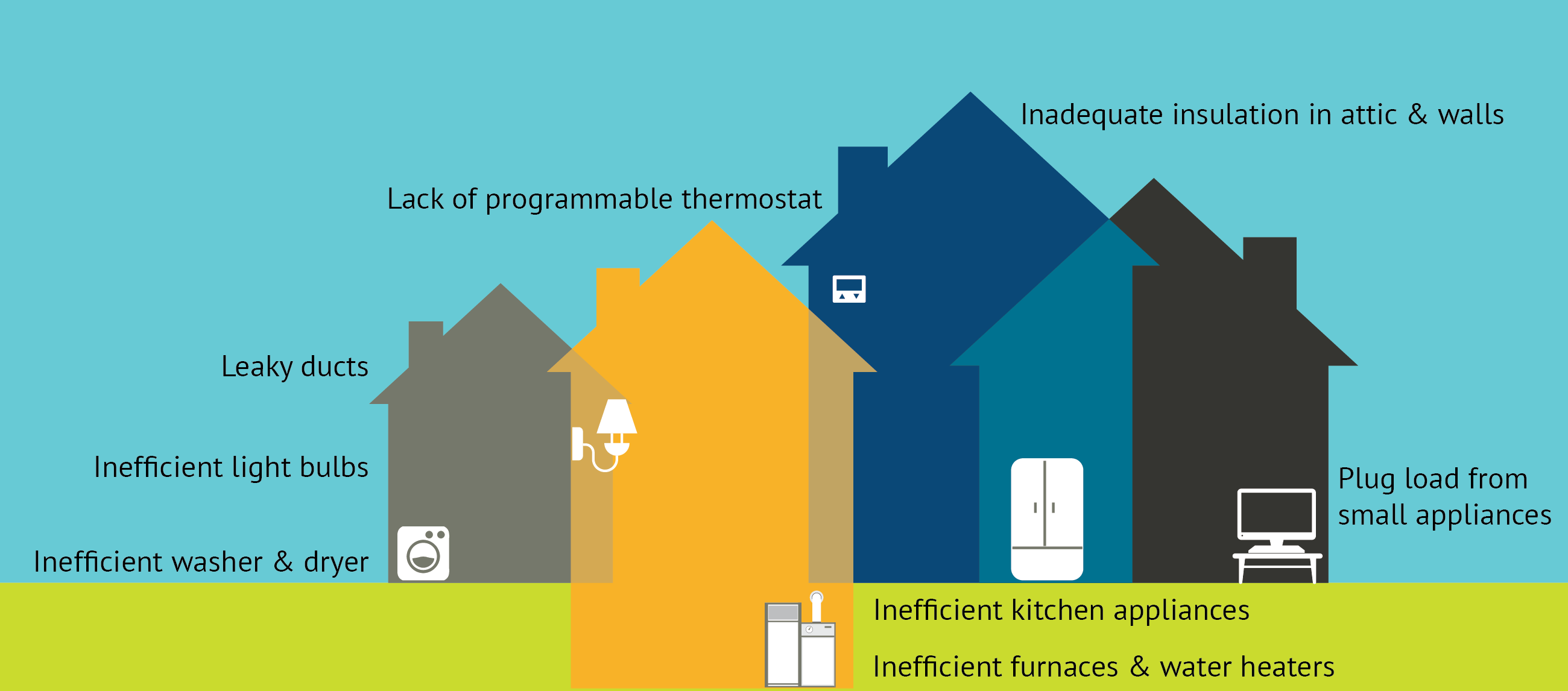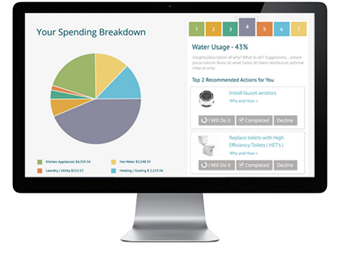
How Your Home Uses Energy
Your home uses energy throughout the day, for heating, cooling, cooking, lighting, entertainment and many other applications. In almost every home, the systems (e.g. air conditioners), building materials (e.g. insulation), appliances (e.g. washers), and lighting are usually not optimized for your specific needs or lifestyle There are many opportunities to use efficiency to save money, even after all costs, like equipment, installation, and financing, and government incentives, are taken into account.
Example of Key Energy Efficiency Issues in a Home

Heating and Cooling
Large amounts of electricity, gas and other fuels are used to heat and cool a house. Obviously the size of a house matters as, all things being equal, larger houses require more energy to heat or cool. But other things matter as well:
- The size, type, age and efficiency of the heating and cooling equipment
- The properties of your home’s ‘shell’ including air leakage, insulation, ducts and their age and loss rates, windows and many other components
- Your local climate, and how you use your heating and cooling equipment and manage your home
Lighting and major appliances
Lighting and major appliances also use large amounts of energy in the home - and many are very wasteful, potentially able to give you paybacks within a year or so. For example, while the energy used in lighting depends on the duration of usage, it also dramatically depends on the type of light bulb: new CFL light bulbs use one fifth of the electricity of those used by traditional ones! Switching out certain lights can quickly get you to a lower pricing tier and save huge amounts of money – every year!
Major appliances, like refrigerators, freezers, washers, dryers, water heaters and pools pumps can each consume hundreds of dollars a year in energy. Figuring out which to replace, based on your specific usage patterns in your specific house, can dramatically reduce your energy consumption – and your bill (including the cost of replacement).
- How many people are in your house (using hot water, opening the fridge, creating laundry, etc.?
- What size house do your appliances serve?
- What lifestyle choices would you change (if any)?
Smaller Appliances
The average home today has a large number of small appliances including computers, televisions, DVD players, and coffee makers. One issue with small appliances is that they often stay in stand-by mode when they are not in use and continue to draw electricity. This is typically referred to as the “plug load,” and it can be reduced dramatically with ingenious devices like “smart plugs” that don’t inerfere with your lifestyle at all.
What’s Next?
This tool can help you understand how you uste energy and can create a plan for you to lower your bills. We can also connect you to the experts and resources you need to finalize your plan and capture potentially large savings.

